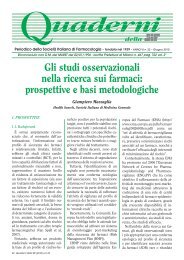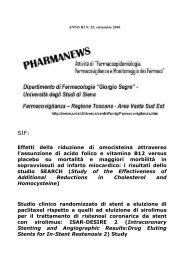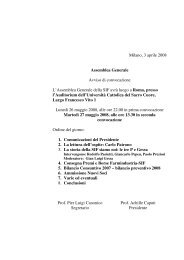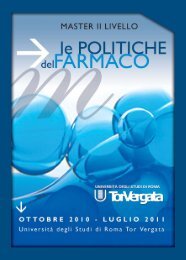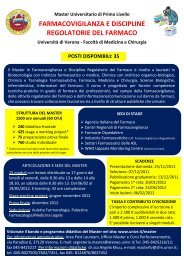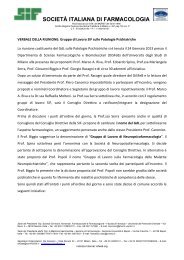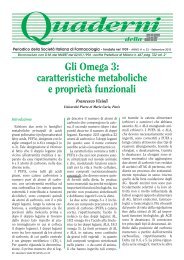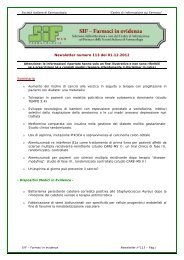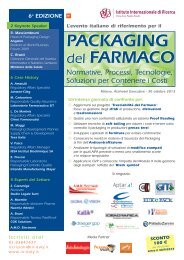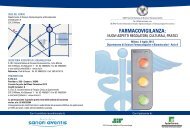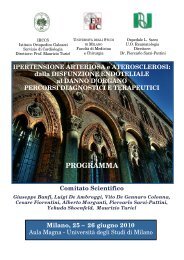scienze della vita roma, 22-23 ottobre 2012 - SIF
scienze della vita roma, 22-23 ottobre 2012 - SIF
scienze della vita roma, 22-23 ottobre 2012 - SIF
You also want an ePaper? Increase the reach of your titles
YUMPU automatically turns print PDFs into web optimized ePapers that Google loves.
NEW BIOSENSORS FOR BPA DETECTION<br />
D. Moscone a , F. Arduini a , M. Portaccio b , D. Di Tuoro b , D.G. Mita b , M. Lepore b<br />
a Dipartimento di Scienze e Tecnologie Chimiche, Università di Roma Tor Vergata, Rome, Italy<br />
b Dipartimento di Medicina Sperimentale, Seconda Università di Napoli, Napoli, Italy<br />
Recently, Bisphenol A (BPA) has received considerable attention due to its endocrine disrupting<br />
activity and possible toxic impact on environment. It is an important organic chemical owing to its<br />
wide use as intermediate in the manufacture of polycarbonate plastics, epoxy resins, and flame<br />
retardants. Its main use is as coating of metallic cans, powder paints, dental fillings, and antioxidant<br />
in plastics. It is also been used as an inert ingredient in pesticides, antioxidants and polyvinyl<br />
chloride stabilizer, so BPA levels in the low �g/L range have been found in clinical, food and water<br />
samples. The above findings suggest that it is necessary to determine the BPA presence also in trace<br />
amounts. Traditional methods for BPA detection include ch<strong>roma</strong>tographic techniques coupled with<br />
mass spectrometry, capillary electrophoresis and solid phase microextraction, methods that are time<br />
consuming, cannot be performed on-site and require sample pre-treatment. Electrochemical sensors<br />
can provide rapid and on-site BPA detection.<br />
In this presentation the development of new biosensors for the determination of BPA will be<br />
illustrated, both using classical and disposable electrochemical sensors (SPE) and enzymes such as<br />
tyrosinase and laccase eventually combined with properly chosen redox-active compounds. In order<br />
to increase the analytical performance of the proposed biosensors, the screen printed sensors have<br />
also been modified by using nanostructured materials (carbon black).<br />
Application of the new biosensors in real samples such as in peeled tomatoes stored in metallic<br />
cans, will be also presented.<br />
38



